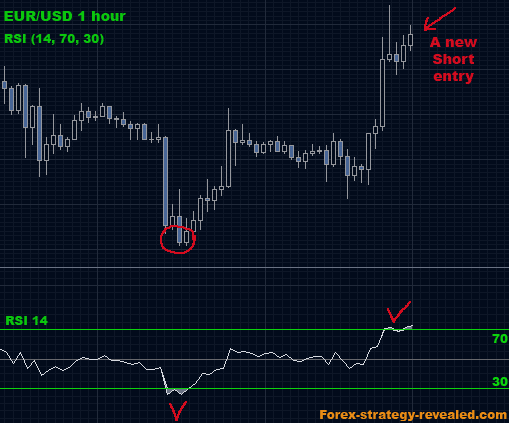
US News & World Report has an educational section that covers a range of topics including average first-year retention, graduate indebtedness, and faculty salaries. It also adjusts for regional differences in the cost of living. It is a great resource for anyone considering a higher education. But, before you make your final choice, there are a few things you need to know. Below, we'll look at some of the most important figures in US finance.
Average first-year retention rate
U.S. News' rating system evaluates colleges and universities using three components: average first year retention rate, average student loan, and average graduate indebtedness. The retention rates are an indicator of the school's ability to attract students. Average first-year student debt is also important. Graduate indebtedness or the total amount that federal loans have been owed to a class of graduates from a bachelor's degree program for 2019 and 2020, is the average student debt. Among institutions that receive federal loan debt, this figure is especially volatile, given that the cohort is so small.
U.S. News takes the average first-year retention rate from schools that have been operating since the fall 2016-2017 as a comparison. These results are based upon five factors: class size, faculty-student ratio and percentage of full time faculty. They cover the period from the first year of admission through the first year after graduation. While U.S. News' ranking system looks at retention rates as a whole, many institutions use multiple metrics to compare schools.

Total graduate indebtedness
Prospective students and families are concerned about how much debt they will owe at graduation. One ranking factor concerns graduate indebtedness. This is the total amount of graduate debt a graduating class has incurred. It is equal to the median debt for all ranked schools. There are a lot of graduates currently in debt. Approximately forty million students currently have at least one outstanding educational loan.
The highest student debt burden will not be borne by colleges that are highly ranked on U.S. News’ Best Colleges List. However, there are some institutions that have less student debt than others. These institutions may not be as financially sound as other colleges and may not have a high debt burden compared to their peers. The College Scorecard website has information on undergraduate students' average student debt. A site is also available from the Department of Education that allows students to compare college debt in order to make sure they are choosing a college that offers quality education.
Average faculty salaries
According to the U.S. News, the average faculty salaries at the best universities in the country are the highest among those in the business and finance departments. The report examines faculty compensation at universities across the country, and the difference between full professor salaries at these institutions and the salaries of their assistant professors and associate professors is striking. While there are some significant changes to the report from last years, the top universities in full professor salary remain the same. For example, five of the top 10 spots were taken by the University of California System. The University of Northwestern University moved up to the eighth place, replacing the University of Maryland at number eight.
Supplemental faculty salaries are also included in the survey. As such, the AAUP survey may need to be adjusted to include part-time faculty salaries. Additionally, institutions may be required to report pay data from adjuncts for the past year in order to make it easier to collect. Despite this, the AAUP has continued to contribute to reporting salaries for faculty. It is important to remember that adjunct faculty salaries are not always publicly reported and often very low.

Adjusted to adjust for regional differences in living costs
The United States doesn't publish an official cost of life index. However, the Bureau of Labor Statistics publishes a Consumer Price Index (CPI), which tracks changes in costs over time. CPI data can be used to calculate cost of living indexes by some organizations. Cost of living indexes generally use 100 as their base and give different numbers to different areas based on how they compare.
These reports include information on prices for utilities and housing, as well as healthcare costs (including common surgery), entertainment, vehicle registration fees and insurance, and prices for food and gas. Prices are adjusted annually to reflect regional variations in the cost of living. In 2019, San Francisco's cost of living was higher than Salt Lake City. While cost of living varies from region to region, the United States has high averages, and some regions are more expensive than others.
FAQ
Why is a stock called security?
Security is an investment instrument whose worth depends on another company. It can be issued by a corporation (e.g. shares), government (e.g. bonds), or another entity (e.g. preferred stocks). The issuer can promise to pay dividends or repay creditors any debts owed, and to return capital to investors in the event that the underlying assets lose value.
What is an REIT?
A real-estate investment trust (REIT), a company that owns income-producing assets such as shopping centers, office buildings and hotels, industrial parks, and other buildings is called a REIT. These are publicly traded companies that pay dividends instead of corporate taxes to shareholders.
They are similar to a corporation, except that they only own property rather than manufacturing goods.
What's the role of the Securities and Exchange Commission (SEC)?
SEC regulates securities brokers, investment companies and securities exchanges. It enforces federal securities laws.
What are the benefits to investing through a mutual funds?
-
Low cost - buying shares from companies directly is more expensive. Purchase of shares through a mutual funds is more affordable.
-
Diversification – Most mutual funds are made up of a number of securities. One security's value will decrease and others will go up.
-
Professional management - professional mangers ensure that the fund only holds securities that are compatible with its objectives.
-
Liquidity: Mutual funds allow you to have instant access cash. You can withdraw your money whenever you want.
-
Tax efficiency- Mutual funds can be tax efficient. You don't need to worry about capital gains and losses until you sell your shares.
-
Buy and sell of shares are free from transaction costs.
-
Mutual funds are easy-to-use - they're simple to invest in. All you need is money and a bank card.
-
Flexibility – You can make changes to your holdings whenever you like without paying any additional fees.
-
Access to information - You can view the fund's performance and see its current status.
-
You can ask questions of the fund manager and receive investment advice.
-
Security - you know exactly what kind of security you are holding.
-
You have control - you can influence the fund's investment decisions.
-
Portfolio tracking - You can track the performance over time of your portfolio.
-
Easy withdrawal: You can easily withdraw funds.
There are disadvantages to investing through mutual funds
-
Limited selection - A mutual fund may not offer every investment opportunity.
-
High expense ratio: Brokerage fees, administrative fees, as well as operating expenses, are all expenses that come with owning a part of a mutual funds. These expenses can reduce your return.
-
Lack of liquidity: Many mutual funds won't take deposits. They must be bought using cash. This limits your investment options.
-
Poor customer service. There is no one point that customers can contact to report problems with mutual funds. Instead, you will need to deal with the administrators, brokers, salespeople and fund managers.
-
High risk - You could lose everything if the fund fails.
What is a mutual-fund?
Mutual funds consist of pools of money investing in securities. Mutual funds offer diversification and allow for all types investments to be represented. This reduces the risk.
Managers who oversee mutual funds' investment decisions are professionals. Some mutual funds allow investors to manage their portfolios.
Mutual funds are more popular than individual stocks, as they are simpler to understand and have lower risk.
Statistics
- Our focus on Main Street investors reflects the fact that American households own $38 trillion worth of equities, more than 59 percent of the U.S. equity market either directly or indirectly through mutual funds, retirement accounts, and other investments. (sec.gov)
- The S&P 500 has grown about 10.5% per year since its establishment in the 1920s. (investopedia.com)
- For instance, an individual or entity that owns 100,000 shares of a company with one million outstanding shares would have a 10% ownership stake. (investopedia.com)
- Ratchet down that 10% if you don't yet have a healthy emergency fund and 10% to 15% of your income funneled into a retirement savings account. (nerdwallet.com)
External Links
How To
How to Trade in Stock Market
Stock trading refers to the act of buying and selling stocks or bonds, commodities, currencies, derivatives, and other securities. Trading is French for traiteur. This means that one buys and sellers. Traders trade securities to make money. They do this by buying and selling them. It is one of the oldest forms of financial investment.
There are many ways you can invest in the stock exchange. There are three types of investing: active (passive), and hybrid (active). Passive investors watch their investments grow, while actively traded investors look for winning companies to make a profit. Hybrids combine the best of both approaches.
Passive investing is done through index funds that track broad indices like the S&P 500 or Dow Jones Industrial Average, etc. This is a popular way to diversify your portfolio without taking on any risk. You can simply relax and let the investments work for yourself.
Active investing involves selecting companies and studying their performance. An active investor will examine things like earnings growth and return on equity. They will then decide whether or no to buy shares in the company. They will purchase shares if they believe the company is undervalued and wait for the price to rise. On the other side, if the company is valued too high, they will wait until it drops before buying shares.
Hybrid investing is a combination of passive and active investing. For example, you might want to choose a fund that tracks many stocks, but you also want to choose several companies yourself. This would mean that you would split your portfolio between a passively managed and active fund.